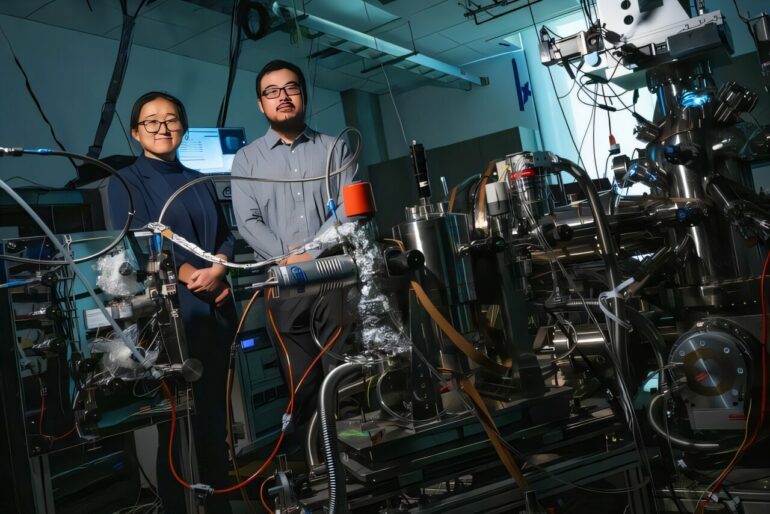A discovery by Rice University physicists and collaborators is unlocking a new understanding of magnetism and electronic interactions in cutting-edge materials, potentially revolutionizing technology fields such as quantum computing and high-temperature superconductors.
Led by Zheng Ren and Ming Yi, the research team’s study on iron-tin (FeSn) thin films reshapes scientific understanding of kagome magnets—materials named after an ancient basket-weaving pattern and structured in a unique, latticelike design that can create unusual magnetic and electronic behaviors due to the quantum destructive interference of the electronic wave function.
The findings, published in Nature Communications Oct. 30, reveal that FeSn’s magnetic properties arise from localized electrons, not the mobile electrons scientists previously thought.
This discovery challenges existing theories about magnetism in kagome metals in which itinerant electrons were assumed to drive magnetic behavior. By providing a new perspective on magnetism, the research team’s work could guide the development of materials with tailored properties for advanced tech applications such as quantum computing and superconductors.
“This work is expected to stimulate further experimental and theoretical studies on the emergent properties of quantum materials, deepening our understanding of these enigmatic materials and their potential real-world applications,” said Yi, an associate professor of physics and astronomy and Rice Academy Senior Fellow.
Using an advanced technique that combines molecular beam epitaxy and angle-resolved photoemission spectroscopy, the researchers created high-quality FeSn thin films and analyzed their electronic structure. They found that even at elevated temperatures, the kagome flat bands remained split, an indicator that localized electrons drive magnetism in the material. This electron correlation effect adds a new layer of complexity to understanding how electron behavior influences magnetic properties in kagome magnets.
The study also revealed that some electron orbitals showed stronger interactions than others, a phenomenon known as selective band renormalization previously observed in iron-based superconductors, offering a fresh perspective on how electron interactions influence the behavior of kagome magnets.
“Our study highlights the complex interplay between magnetism and electron correlations in kagome magnets and suggests that these effects are non-negligible in shaping their overall behavior,” said Ren, a Rice Academy Junior Fellow.
Beyond advancing the understanding of FeSn, the research has broader implications for materials with similar properties. Insights into flat bands and electron correlations could influence the development of new technologies such as high-temperature superconductors and topological quantum computation, where the interplay of magnetism and topological flat bands generates quantum states that can be used as quantum logic gates.
More information:
Zheng Ren et al, Persistent flat band splitting and strong selective band renormalization in a kagome magnet thin film, Nature Communications (2024). DOI: 10.1038/s41467-024-53722-3
Citation:
Discovery challenges existing theories of magnetism in kagome metals (2024, October 30)



